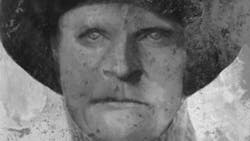I bring you this column out of my pure fascination with cold cases, forensics, police work, and all things mysterious. As an active duty Police Officer, I hold an interest in all cases especially those that bring justice to light in the end. The purpose of this column is to tell the story of how technology and forensics can play a key role in solving a case even if it has been cold for decades, giving hope to those who may be in the middle of a tough case that has led to sleepless nights. I have been there, and have experienced the constant thought process of how a case could be solved, questioning what is missing and going over the evidence numerous times. I hope you find these cases as intriguing and motivating as I do.
Cold Case Resolutions #2: Case of the Cave Corpse
As every officer and investigator knows, when it comes to solving crimes, collecting evidence, apprehending suspects, identifying victims and witnesses, time is of the essence. A search warrant might not bear as much fruit, so to speak, if conducted a month after a crime occurs. It's poor policing to respond at a leisurely pace to a home invasion in progress. Stopping a drunk driver isn't something officers can simply get around to. Occasionally, though, time is not on the side of investigators, and the window of opportunity is closed, making it impossible to solve some cases. However, with advancements in DNA technology, sometimes that window can be reopened.
In August of 1979, a family traversing Buffalo cave located in Dubois, Idaho, in search of arrowheads came across something far more shocking. The family discovered a burlap sack within the cave and upon opening it they found a dismembered torso. Local law enforcement got involved but was unable to identify the remains. In 1991 in the same cave a child stumbled across another grizzly sight: a burlap wrapped hand. This prompted more searches of the cave, which turned up the corpse's remaining limbs, however, like a secondhand jigsaw puzzle, this corpse was missing a piece. To this day, the head has never been found. With no details other than a decomposed, headless body, and a tattered maroon sweater, both the FBI forensic team, and experts from the Smithsonian Institute were unable to identify the aptly named “Buffalo Cave Torso”. In 2015 the Clark County Sheriff's Department began working in conjunction with anthropological researchers form Idaho State University in an effort to resolve this case. Eventually the research team requested the help of the Anthony Redgrave, a forensic genealogist at Othram (a company which has developed new approaches to identifying remains through genome sequencing), and team leader at the DNA Doe Project, a group which uses genetic genealogy to identify John and Jane Doe's.
The DNA Doe Project uses collected DNA, which may be highly degraded depending on the condition of the subject, to sequence every base pair of DNA fragments, eventually assembling them into an electronic version of the subject's original genome. Once this complicated and lengthy process is complete the data is uploaded to GEDmatch, a genetic genealogy comparison service used by many DNA testing companies. Thanks to the efforts of the Clark County Sheriff's Department and the numerous volunteers from Idaho State University, the DNA Doe Project, and GEDmatch, the Buffalo Cave Corpse was finally identified thanks to DNA comparison to an 86 year old living grandson of the subject. In late 2019 it was announced by the Clark County Sheriff's Department long unknown Buffalo Cave Corpse was a Utah based outlaw by the name of Joseph Henry Loveless.
Joseph Loveless, born December 3rd, 1870 in Payson, Utah, was a bootlegger by trade. Loveless used a slew of aliases during his criminal career, to include Charles Smith. After multiple arrests in 1913, Loveless was on the lamb with warrants out for multiple crimes including escaping jail. In 1916 Loveless' wife, Agnes Loveless was murdered with an ax by a man identified in reports as Charles Smith. A few days later a man listed as Walter Currans, another known alias for Loveless, was arrested for the murder. At Agnes' funeral, one of the Loveless children was quoted as saying “Papa never stayed in jail very long and he'll soon be out.” Sure enough, days after his arrest, Loveless, listed in jail records as Walter Cairns, escaped jail by cutting through the cell bars using a saw believed to be concealed in his shoe. It is believed Loveless was hiding out in the outskirts of Dubois, Idaho after his escape in May 1916. Further adding to the confirmation the torso belonged to Loveless, the name Joseph Henry was found on a headstone in the Loveless family plot in a cemetery in Payson, Utah, with no date of death etched on it, and nobody interred in the grave.
103 years after his death, and 40 years after the initial discovery of his body, it still remains unknown who killed Joseph Loveless, what they did with his severed head, or why they dismembered him. However with a positive identification as the career criminal Joseph Henry Loveless, we can confidently speculate why someone would want this bootlegging, jail escaping, wife murdering, wild west outlaw dead. After a lifetime of false names and fleeing law enforcement, Loveless was finally found and identified, but it took a grim fate and the slow passage of time to bring him in. The case of Loveless' murder remains open with the Clark County Sheriff's Department.

Officer Brendan Rodela, Contributing Editor | Officer
Brendan Rodela is a Deputy for the Lincoln County (NM) Sheriff's Office. He holds a degree in Criminal Justice and is a certified instructor with specialized training in Domestic Violence and Interactions with Persons with Mental Impairments.



